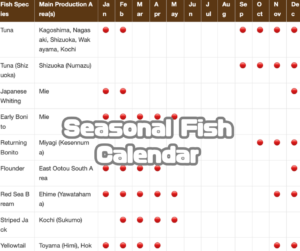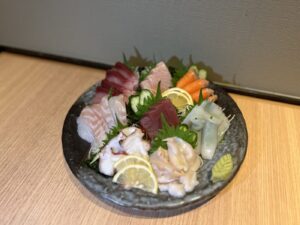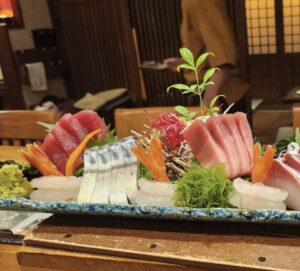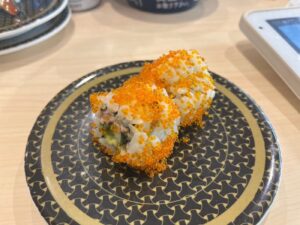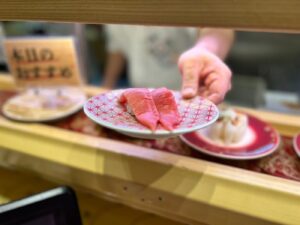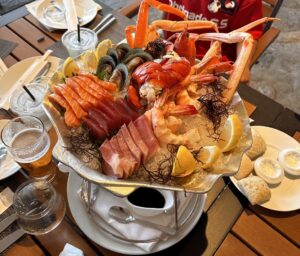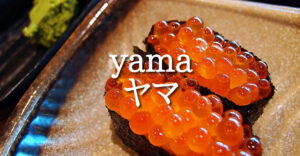The world’s most popular Japan dish, Edomae sushi. Salmon sushi is the first thing you see in the Japan food corners of supermarkets and restaurants around the world. It is a very popular sushi material in Japan, mainly conveyor belt sushi, but there are many aspects that are surprisingly unknown.
What kind of sushi is salmon sushi?
In this article, we will explain about delicious but slightly complicated salmon sushi, as well as how to make salmon sushi and how to shop it.
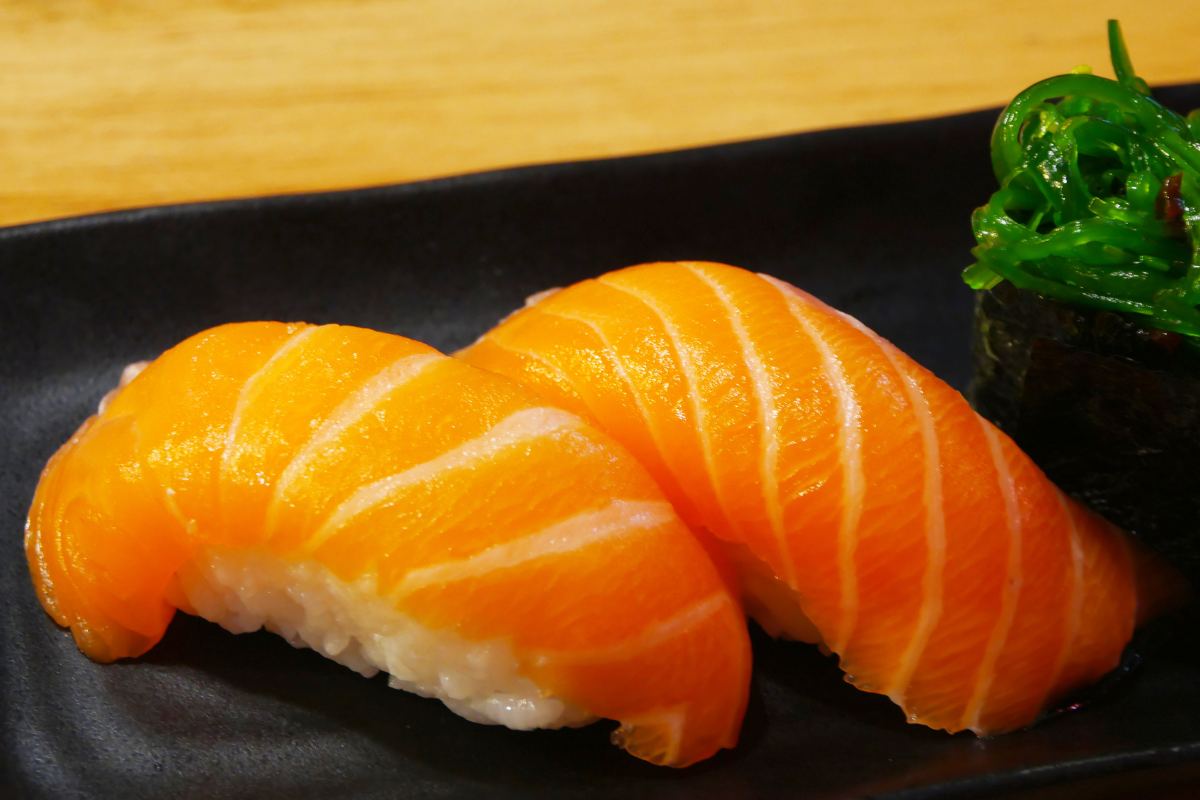
The birth and history of salmon sushi
How did salmon sushi come about and become popular? First, let’s take a look at how it was born.
What kind of sushi is salmon sushi?
Salmon sushi is made by combining salmon, which is rich in protein and omega-3 fatty acids, with sushi toppings, but it also goes well with other ingredients, so it is also characterized by many variations, such as combining it with onions and mayonnaise.
Especially in conveyor belt sushi, you can see a variety of salmon sushi menus such as onion salmon sushi, salmon mayonnaise sushi, etc., not limited to simple salmon sushi.
How salmon sushi was born
In fact, when Edomae sushi originated, salmon was not a sushi ingredient.
Yes, salmon sushi, as it is commonly known today, is not the sushi that originated in Japan.
“Salmon” was born in the late 1980s, and the name “salmon” took root in the 1990s. Until then, salmon had been considered unsuitable for eating raw due to the presence of parasites such as aniki in Japan, so it was not treated as a sushi ingredient in Edomae sushi.
In 1986, Norway, which succeeded in developing parasite-free salmon, launched Project Japan as part of its overseas market development strategy to popularize domestically produced salmon to the world, and succeeded in marketing salmon as a sushi ingredient Japan. That’s where the authentic history of salmon sushi begins.
Delicious salmon sushi quickly spread not only across the country Japan but also around the world, becoming one of the most popular sushi ingredients in Japan.
Salmon sushi, why major in conveyor belt sushi?
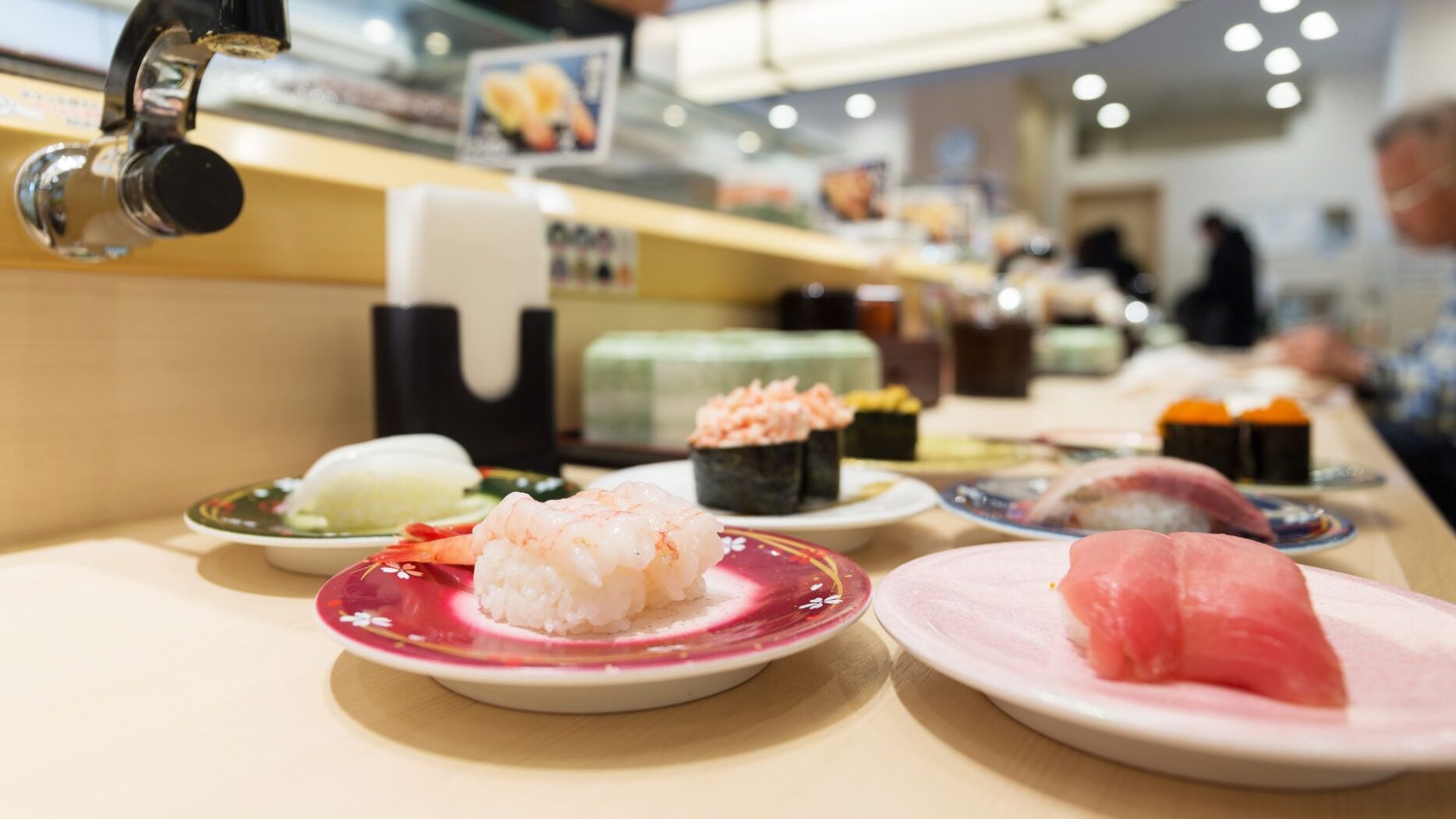
Salmon sushi is a standard conveyor belt sushi, but you don’t see it very often at high-end sushi restaurants in the counter style. The reason for this is related to the origin of salmon mentioned earlier.
As the name suggests, Edo-mae sushi was born in Tokyo, but salmon cannot be caught in Edo Bay, and even if it is transported from the area where salmon is caught, there is a high risk of parasites, so there was no custom of eating Japan salmon raw.
For this reason, salmon was basically absent in traditional Edomae sushi. However, some sushi chefs who value tradition value the origins of Edomae sushi and still do not use salmon as a sushi ingredient in high-end restaurants.
However, in conveyor belt sushi, which also has a short history, regardless of these circumstances, salmon that can be served at a reasonable price has become a good sushi material.
Salmon, salmon, and trout, what is the difference?
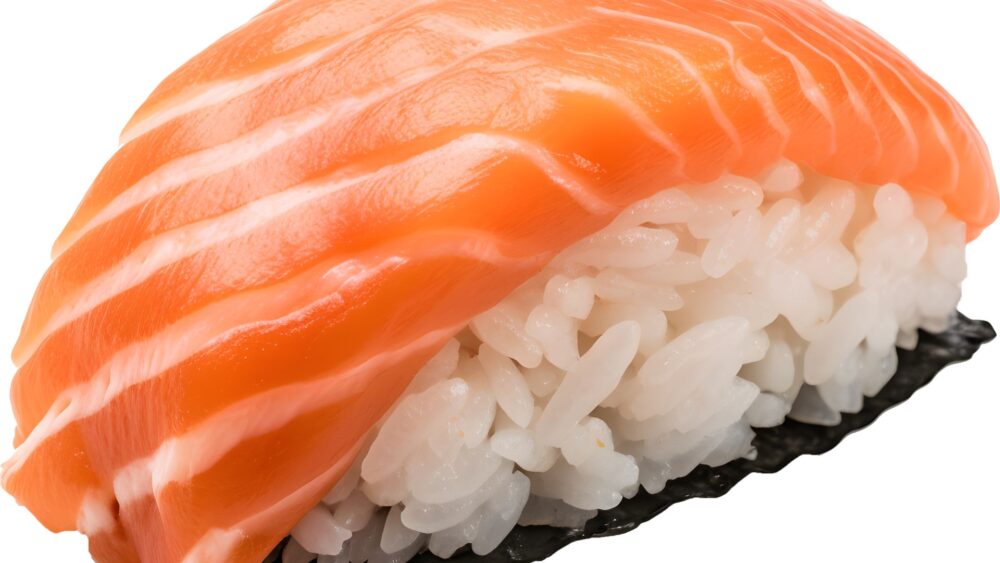
Since they look and taste very similar, it is difficult to distinguish between salmon, salmon, and trout. In fact, it is said that there is no biological difference between salmon and trout, but this time I will explain how they are generally distinguished.
salmon
Salmon in the narrow sense of the Japan refers to chum salmon, a saltwater fish belonging to the genus Salmonidae of the order Salmonidae, but sockeye and coho salmon, which used to be called sockeye trout and gimmas, are also being called salmon more often these days.
salmon
It’s confusing because the English name of salmon is salmon in the first place, but in general, salmon almost always refers to Atlantic salmon and trout salmon.
As mentioned above, Atlantic salmon is salmon that is actively exported to countries around the world, mainly in Norway, and it is also a brand called Norwegian salmon.
Trout salmon is mainly produced in Chile and Norway in South America, and is widely distributed in Japan. The “trout” of trout salmon means trout, so the literal translation is trout salmon!
Naturally, trout salmon is made by farming rainbow trout (rainbow trout), a freshwater fish that originally lives in rivers, in the sea. Even though it is called rainbow trout, rainbow trout raised in the sea are much larger than conventional rainbow trout.
trout
Among the bony fish of the salmonidae family, it refers to the fish named “trout” or “~ trout”, but in the market, pink salmon from the North Pacific was called “trout” to distinguish it from the Japan “cherry trout”.
In dictionaries, etc., it is said that trout mainly refers to “pink salmon” and “cherry trout”.
In practice, it is difficult to distinguish between trout and salmon, for example, king salmon also has the name of trout in academic terms. At first glance, it seems to belong to trout, but the reality of trout is that it corresponds to the largest salmon.
Summary of the differences between salmon, salmon, and trout

After all, the difference between salmon, salmon, and trout is a mixture of Japanese and English, so it is not possible to classify them biologically, but if we were to force them to separate from a general point of view,
Salmon belongs to the salmon genus of the salmon family, coho salmon, sockeye salmon and sockeye salmon.
Salmon is made by adding Atlantic salmon of the salmon family to rainbow trout (trout salmon) and trout (king salmon) belonging to the salmon genus Salmonidae.
Trout is generally divided into pink salmon and cherry trout.
A variety of salmon sushi
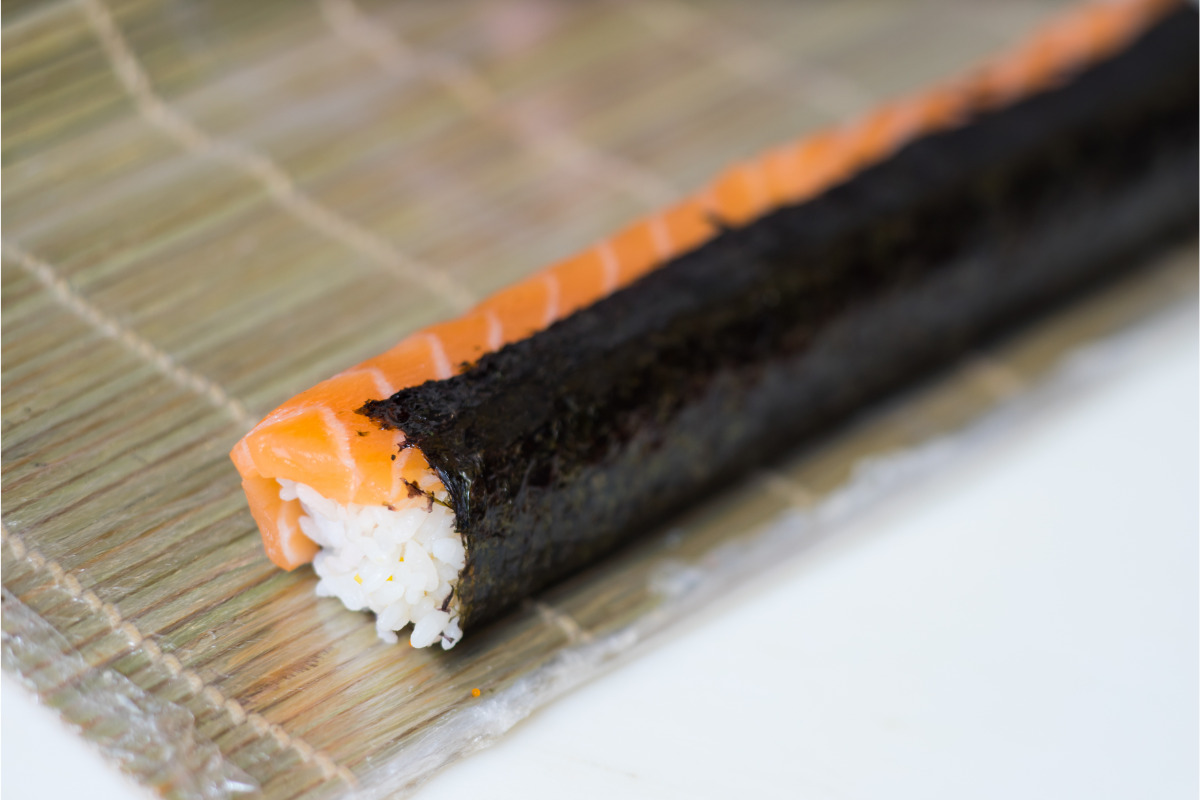
Salmon sushi is extremely popular both in Japan and abroad, and one of the reasons for this is the rich variety. What types of salmon sushi are there? We will explain the types of salmon and the sushi menu.
Types of fish used in salmon sushi
The salmon sushi you see in conveyor belt sushi is dominated by farmed Atlantic salmon and trout salmon.
Sakuramasu is also used in trout sushi, a local dish of Toyama Prefecture.
Types of salmon sushi
The variety of salmon sushi you see in conveyor belt sushi has its own unique taste that delights customers’ palates.
Well-known salmon sushi has something like this.
Toro Salmon
Sushi made with the fatty part of the salmon. It is as mellow as tuna toro.
Broiled salmon
Even if you don’t like raw, if you broil it, the fishy smell will be eliminated! There is also a combination with mayonnaise, so you can eat it deliciously. The sweetness that increases by broiling is also preferable.
Salmon carpaccio or salmon onion
A Western-style menu that can be enjoyed with onion slices and dressing. There is also a type with an avocado on top.
Salmon Shabu-Shabu
It is sushi with salmon that is quickly dipped in boiling water like shabu-shabu to make it easy to eat. You can eat it refreshingly with ponzu sauce.
Taste and nutrition of salmon sushi
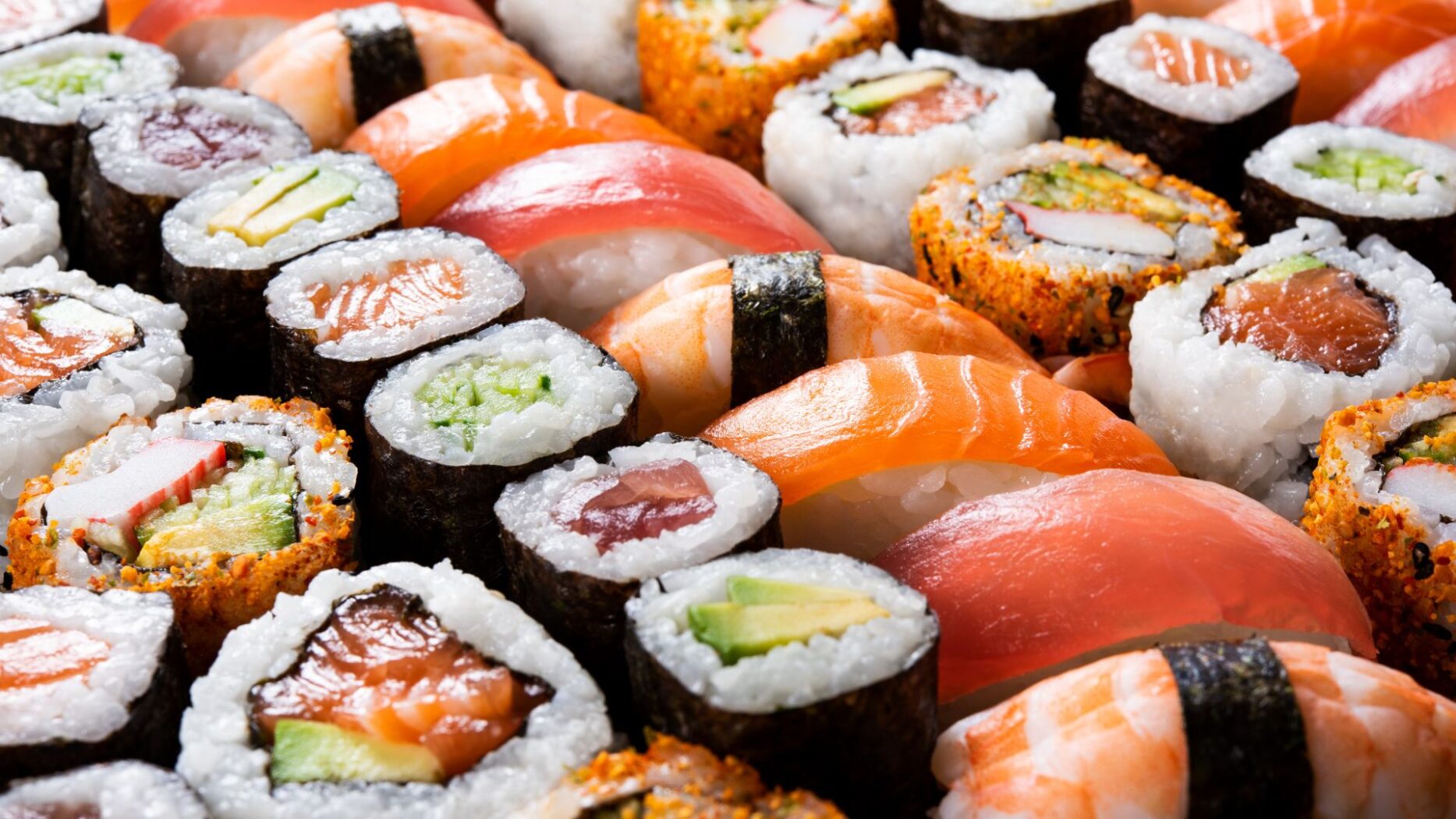
Even foreigners who are not good at raw fish and sushi often say that salmon sushi is OK.
Salmon, which is mainly farmed, has little odor that is common in raw fish, and has a moderate sweetness and rich taste, so it is easy to eat even for people who are not good at raw fish, and it is easy to eat for sushi beginners.
Salmon is also known for its high nutritional value. What kind of nutrition does salmon have? Let’s take a look at the main nutrients and benefits
contained in 100g of salmon.
Nutrition contained in salmon (100 g)
Protein (19.6g)
It is an important component of muscles and organs.
Vitamin D (7.3μg)
It has the effect of keeping various functions normal.
Docosahexaenoic acid (540 mg)
Commonly known as DHA, it is said to prevent arteriosclerosis and blood clotting.
Eicosapentaenoic acid (360 mg)
Commonly known as EPA, it works to prevent blood from clotting.
3 recommended salmon sushi recipes
Here are some salmon sushi recipes that you can easily make at home using commercially available salmon. You can do it with Atlantic or trout salmon, so be sure to give it a try.
Temari Sushi
Among the salmon sushi you make at home, Temari sushi looks good and is easy to eat.
Simply place the cut salmon on top of the bite-sized shari to complete the process.
Top it with cream cheese, large leaves, salmon roe, etc. for a party.
Bamboo leaf sushi
The advantage of salmon is that it has a low fishy smell, but if you want to make even more fragrant sushi, try using bamboo leaves.
You can wrap the sushi you hold in bamboo leaves, or use a container to make it pressed sushi-style!
All of them are easy to do and have a sense of luxury.
Salmon chirashi sushi
The beautiful color of salmon is perfect for chirashizushi. Try using brocade eggs, avocados, green jiso and salmon roe to make a dish that will please the eyes.
Available for purchase online! Delicious salmon sushi
If you don’t want to make it yourself, you can also buy delicious salmon sushi online with professional hands.
Here are three recommended salmon sushi.
Salmon Sushi (Echizen Hagi)
Echizen Hagi’s salmon sushi has a great reputation for its thickness and trotro feeling.
Koshihikari from Fukui Prefecture and thick salmon with plenty of penetration go well together, and it is a masterpiece that keeps repeaters.
Name: Raw mackerel sushi Echizen Hagi
Grilled Toro Salmon Haras Sashimi and Sushi Slices (King of Gourmets)
Broiled salmon, which is also familiar from conveyor belt sushi, can also be purchased online!
With outstanding freshness and moderate broiling, you can enjoy the sweetness of salmon to your heart’s content.
Serve it in sushi and rice bowls with other ingredients!
Name: King of Gourmet
Rock salt broiled king salmon box sushi (catered rice)
Here is the popular box sushi with its dynamic appearance of sandwiching vinegared rice with thickly sliced king salmon.
The amount of salmon that breaks common sense is gorgeous, and it is a gem that is also useful for crowded seats.
Store name: Catered rice manager

